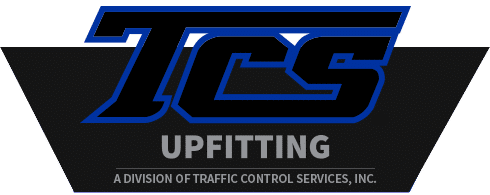Every business enterprise should undoubtedly seek ways to increase efficiency and reduce costs. Enterprises of all kinds that operate a fleet of vehicles are turning to fleet and driver management systems to help, protect and manage their drivers.
According to data provided by Berg Insight, usage of fleet management systems, along with driver management systems, has grown for many years and is expected to reach 22.2 million units in use across North America by 2024. That is forecasted to reach a penetration rate among non-privately owned commercial vehicles of about 62 percent by 2024. Remarkable and wise!
Fleet management systems and driver management systems are closely linked. A fleet management system is designed to help a business enterprise manage and optimize the performance and efficiency of an entire fleet of vehicles. A driver management system is designed to focus on the drivers’ performance, thus benefiting the entire fleet.
Who Can Use a Driver Management System?
Enterprises that can use a driver management system include essentially any organization that utilizes vehicles for commercial purposes. That can include small businesses with one to five vehicles like HVAC companies, plumbing companies, food delivery services, towing companies, floor cleaning companies, pest control companies, landscaping companies, and small construction companies.
And it includes medium-sized companies in many business categories, all the way up to large fleets of 50 to 100 vehicles (or more) like large supply chain organizations and car companies. Driver management systems can also apply to various emergency services including police, fire, and ambulance vehicles.
What Are the Features of a Driver Management System?
Driver management systems utilize software that is designed to collect and provide information on drivers in a fleet and their vehicle usage behavior. Telematics data and GPS tracking data are integrated into the software to provide management with real-time information on the location of a vehicle, the status of the vehicle, and the driver’s safety behavior.
This provides a means for management to ensure a driver’s compliance, safe driving practices, and contribute to driver training. It is a proactive way to optimize vehicle and driver efficiency. The telematics and GPS data upload precise odometer readings to help a company stay current with vehicle maintenance needs. The information also helps a company communicate arrival times or delays to a client.
The Benefits of a Driver Management System
The benefits of a driver management system include the following.
- Enhanced fleet efficiency. A driver management system gives fleet managers the ability to check on routes that drivers are following to ensure they are following the right routes. Fleet managers can also alter routes to be traveled by examining weather and traffic conditions to ensure prompt delivery or arrival times.
- Improved driver safety. A driver management system can monitor (and thus correct) bad driver behavior including speeding, abrupt braking, and hard braking. It serves as a tool that can help drivers understand better driving and safety practices.
- Digitized documentation. Rather than burdening drivers with old-fashioned paper driving records, digital documents keep driving records organized and secured to get information at your fingertips. Accurate data is collected and stored for easy retrieval and review.
- Better fuel management. Fuel management is a significant benefit, especially with the recent surges in fuel prices. Monitoring fuel usage helps keep drivers accountable for their fuel consumption. That can prevent using vehicles for unauthorized personal use and fuel theft. It can also aid management in finding the most fuel-efficient travel routes.
- Getting telematics data. Integrating GPS into the driver management software allows management to get real-time access to each driver’s location, vehicle status, and driving productivity. This can be a competitive advantage because drivers can be empowered and motivated to drive smarter.
- Improved driver retention. Driver data can be shared with drivers so that they know their own efficiency and safety scores. That can motivate them to perform better, and it can assist management in recognizing and rewarding drivers.
- Driver compliance. Having good information is key to having a successful driver and fleet management strategy. A good driver management system can facilitate keeping constant track of vehicles.
- Alerts and safety. Getting real-time alerts can be highly valuable in case of thefts or emergencies.
- Insights. An excellent driver management system will provide fleet management with insights and information to make vehicle operation effective, efficient, and safe.
The benefits of driver management systems are compelling. They include cost savings, better driving behavior, and enhanced safety.
What Can TCS Upfitting Do for You?
TCS Upfitting offers comprehensive vehicle upfitting services including vehicle upgrades for police, fire, emergency management, military, tow trucks, and vehicles for the general public. We offer products and services for emergency vehicles, heavy-duty trucks, work trucks, ATV/UTV vehicles, and golf carts. We also offer truck accessories, personal safety items, traffic control items, and we offer vehicles for sale.
When we install equipment on any vehicle, you can be assured that we’ll provide only the best products. For example, for emergency vehicles, we offer:
- Exterior equipment including grille guards, push bumpers, truck bed boxes, tonneau covers, vehicle door and window ballistic armor, truck headache racks, batteries, and winches.
- Interior equipment including consoles and accessories, drone command centers, equipment trays, ignition security systems, K-9 transport, prisoner transport, radar and accessories, video systems, weapon vaults, and weapon mounts. We also do window tinting, remote starter and alarms.
- Lighting and electronics including bluePrint 3 control system, exterior light bars, interior lightbars, headlight and rear flashers, perimeter lighting, rear directional lights, spotlights, and scene lighting.
Something else offered is truck accessories. They are as follows:
- Cargo options, including bike racks, cargo carriers, ladder racks, toolboxes, towing, suspension, and truck vaults.
- Engine features, including alternators, starters, chips and tuners, ignition security systems, remote starters, and alarms.
- Exterior options, including grille guards, push bumpers, rear bumper, front bumper replacements, headache racks, nerf bars, running boards, tonneau covers, and winches.
With TCS Upfitting, there’s no reason to stick with a less than optimum configuration. Whether you need off-road gear, an upgraded suspension, added safety equipment, or any other kind of aftermarket truck or car accessories, you can get the best that is available at TCS. You can have these accessories installed on cars, trucks, and SUVs.
Seek Expert Vehicle Upfitting Services
Contact TCS Upfitting, based in Wichita, KS to get the services that you need. We provide integrity you can count on and a warranty that you can rely on. We have recently moved to a larger and more upgraded facility featuring 6 bays with 6,000 feet of service area. We have associations with the Kansas Police Officers Association, Kansas Emergency Medical Services Association, Kansas Sheriffs Association, and the Kansas Chiefs of Police Kansas Association.


